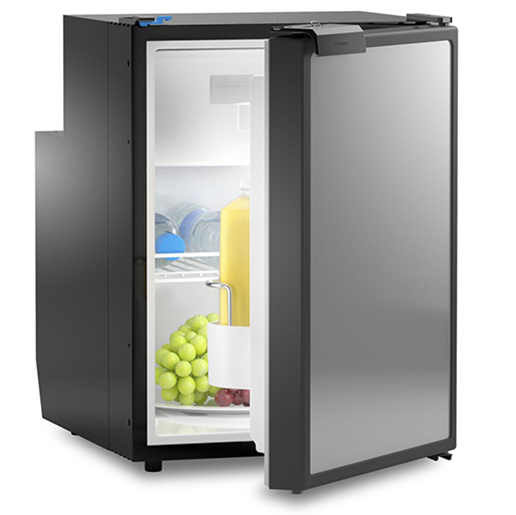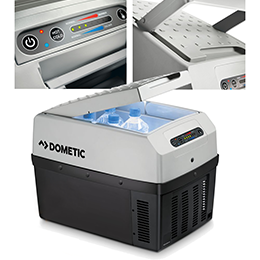Choose the right Coolbox, Fridge or Freezer
for your boat
Here at Force 4 we take cold drinks very seriously, so we make sure that we supply an excellent range of coolboxes and fridges. One question we get asked regularly is why there is such a range of prices, and whats the difference between a £50 coolbox and a £500 coolbox? Well first of all it's important to know the basics of how fridges work in order to understand why some work better than others....
What's the difference between Compressor and Thermoelectric?
The way in which coolboxes and fridges cool themselves can essentially be broken down in to two types: Compressor or Thermoelectric. Compressor fridges work more effectively (most household fridges are compressor fridges) but are more expensive. Thermoelectric systems are cheaper, but don't work as well, meaning they may not be right for your application.
The physics of a fridge
The basic physics of a fridge are reasonably simple but often overlooked. When you use energy to make a fridge cold, the system you use will also create heat. If the cool part is in the fridge, and the hot part is outside of the fridge, you end up with a cold fridge (this is why leaving your fridge door at home open won't actually cool the room; the inside bit is cancelled out by the outside part, and why air conditioning systems in houses need an outside unit to work effectively). Some systems create a bigger heat difference between the inside and outside, hence you get a colder fridge (or even a freezer!).
1. COMPRESSOR SYSTEMS
As the name suggests these units use a compressor, and are generally the most effective, although the complex system of moving parts makes them more expensive than the thermoelectric types. This type of fridge/coolbox will reliably cool in almost any temperature, and can often also run a freezer compartment. They are reasonably energy efficient, and although modern units are very quiet, the compressor can make a small amount of noise (about the same as your fridge at home). We use compressor fridges in our houses, and they perform reliably and consistently, even during a heatwave.



SEE ALL COMPRESSOR REFRIGERATORS
2. THERMOELECTRIC SYSTEMS
These systems use the Peltier effect to cool with no moving parts, although they are often fitted with a small fan to dissipate the heat created on the outside of the unit. They are able to cool slightly, but on warmer days, or when inside a warm vehicle, they seldom cool enough to be considered a true fridge as you may be used to at home. This is however reflected in the price, the system is simple and cheaper to manufacture, and has the advantage of being able to work in reverse, so these coolboxes can often heat as well as cool. Although generally not as efficient as a compressor type unit, they still use reasonably small amounts of power and are mostly fitted to smaller coolboxes, so can often be run off a 12V cigarette lighter socket. The only noise generated is from the fan, so they are normally no louder than a desktop PC.



SEE ALL PORTABLE THERMOELECTRIC COOLBOXES
3. HYBRID VERSIONS
There are a few coolboxes on the market that combine these systems. The Dometic CK40D for example uses a compressor when plugged in to 240v power, but is also fitted with a small 12v thermoelectric unit to try and keep the unit cold during transportation. Having both systems fitted you might expect this to be more expensive than either of the above types, but due to not having complicated voltage control systems, and taking advantages of the economies of scale surrounding 240V fridges, these are actually priced somewhere in between the two types.

SEE DOMETIC CK 40D HYBRID FRIDGE-FREEZER COOLBOX
WHICH SHOULD I CHOOSE?
If you want a coolbox or fridge that does the same job as a domestic version, a compressor type is the one to go for. They are efficient and powerful, and will keep your food and drinks cool in almost any temperature you are likely to experience. If you are just transporting food that is already cool, or if what you are cooling won't spoil if it does get a bit warm, such as drinks, then a thermoelectric type unit can certainly keep things from getting warm, but is unlikely to duplicate what we are used to at home. For this reason almost all installed fridges are compressor types, whereas coolboxes are available in both guises. If you will have access to mains power for some of the time, such as in marinas at night, a hybrid unit can prove very efficient and cost effective.
SEE ALL REFRIGERATION & COOLBOXES
Happy Sailing!

